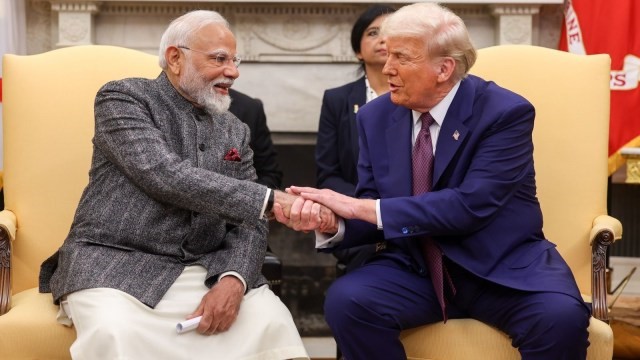Renewed India–US Civil Nuclear Cooperation

- 21 Feb 2025
In News:
Context:
India and the United States have reaffirmed their commitment to fully realise the 123 Civil Nuclear Agreement, marking a major push to revive progress two decades after the pact was signed in 2007.
Key Gains for India
- Technology Transfer & Localisation:The partnership envisions joint construction of US-designed nuclear reactors in India, incorporating large-scale localisation and technology transfer, reversing the US's usual "manufacture-at-home" stance.
- Upgrading India’s Nuclear Capacity:India aims to shift from PHWRs (Pressurised Heavy Water Reactors) to globally dominant PWRs (Pressurised Water Reactors). This will allow India to scale capacity addition and modernise its nuclear fleet.
- Entry into Small Modular Reactors (SMRs):
- SMRs (30–300 MWe) are compact, scalable reactors viewed as essential for future clean energy demands.
- India’s Department of Atomic Energy is exploring collaboration with Holtec International (USA) for joint manufacturing and deployment.
- Holtec's SMR-300, supported by the US Department of Energy with $116 million, is under design review in the UK and Canada.
- Strategic Counter to China:India–US joint ventures in SMRs could counter China’s rising influence in the Global South through its aggressive SMR diplomacy.
Economic & Industrial Impacts
- Holtec plans a nuclear technology campus in Pune and a specialty manufacturing plant in India.
- Existing facility in Dahej, Gujarat, can double workforce if plans are approved.
- Legal reforms in India are being considered to attract investments from Western and Middle Eastern markets into the nuclear sector.
India: Leading the Next Phase of Global Outsourcing (Deloitte Report)
Key Findings from Deloitte’s ‘The Outsourcing Compass’ (2025)
- Growing Demand:
- 81% of global organizations plan to increase outsourcing over the next 3–5 years.
- India continues to lead as a global outsourcing hub, with a projected rise as the world’s 3rd-largest economy by 2027.
- Shift in Outsourcing Models:
- Transition from back-office services to strategic, high-value functions like product development, AI/GenAI support, and brand management.
- 98% of firms depend on Indian service providers for AI and GenAI capabilities.
- Modern Contracting Approaches:
- 36% prefer outcome-based contracts over traditional FTE-based models.
- AI-specific clauses are being added to outsourcing contracts to enhance tracking and cost control.
- Strategic Collaborations & Cost Efficiency:
- Strategic-niche partnerships yield 10–25% annual cost savings; some report 15–35% savings.
- 70% of organizations work with non-traditional providers to access innovative technologies.
- Evolving Operating Models:
- 55% use Global Business Services (GBS) centers for oversight; execution by third-party providers.
- 35% adopt Build-Operate-Transfer (BOT) models to scale up while retaining control.
- Robust Governance Structures:
- 45% of mature outsourcing firms operate Vendor Management Offices (VMOs) to manage risks and enhance effectiveness.
Why India Remains Preferred:
- A skilled digital workforce, thriving startup ecosystem, policy stability, and advancements in cybersecurity and vendor governance bolster India’s position.
